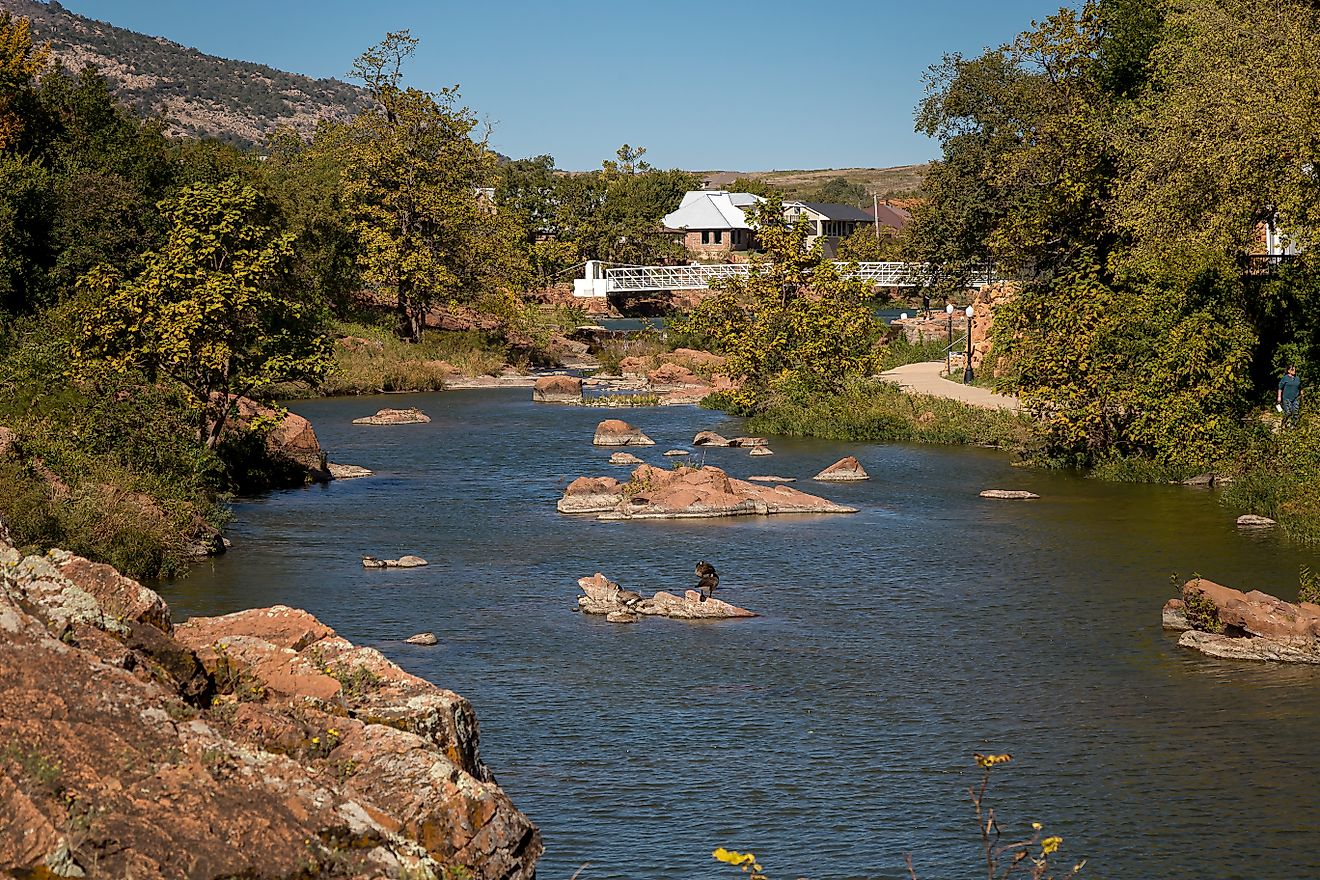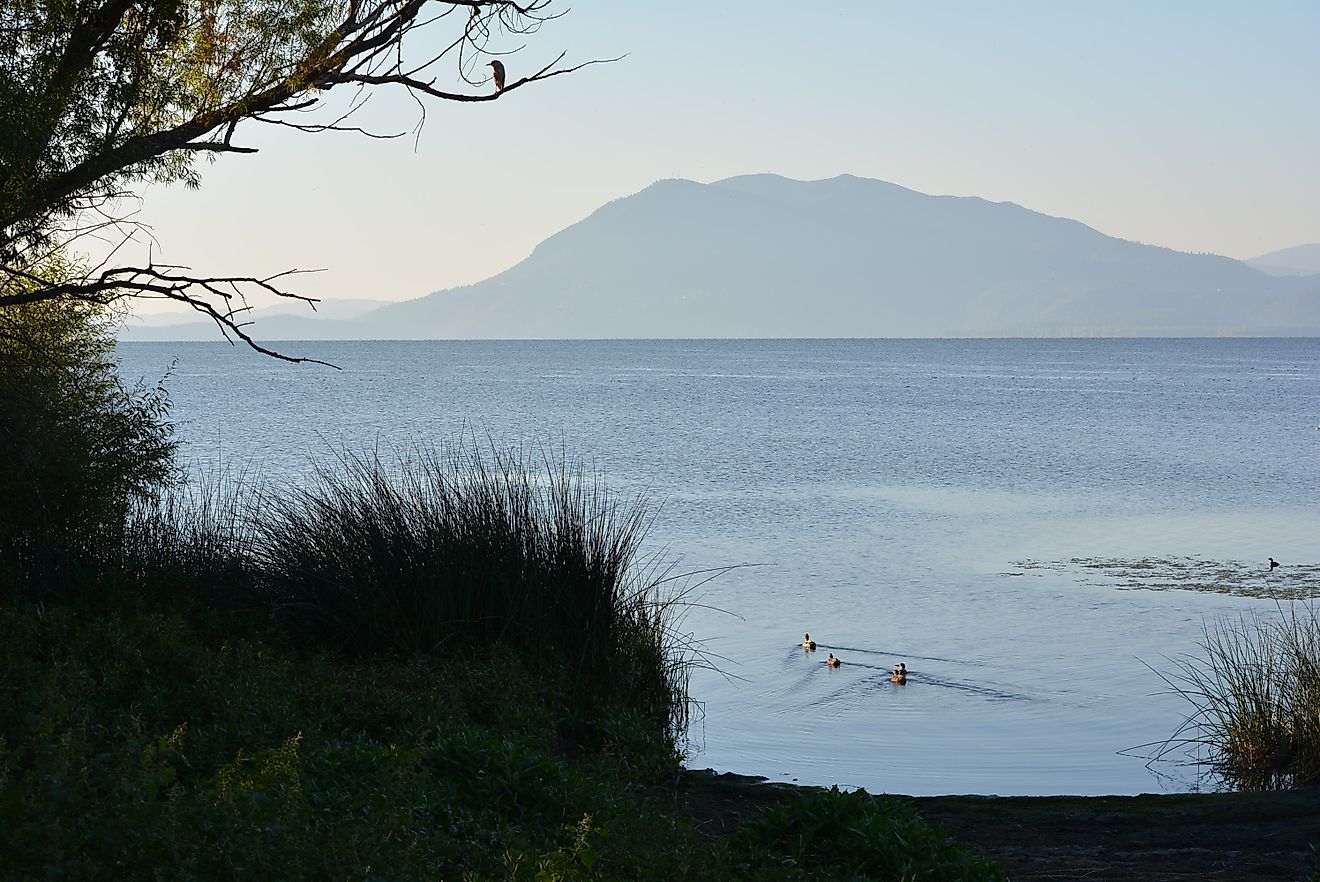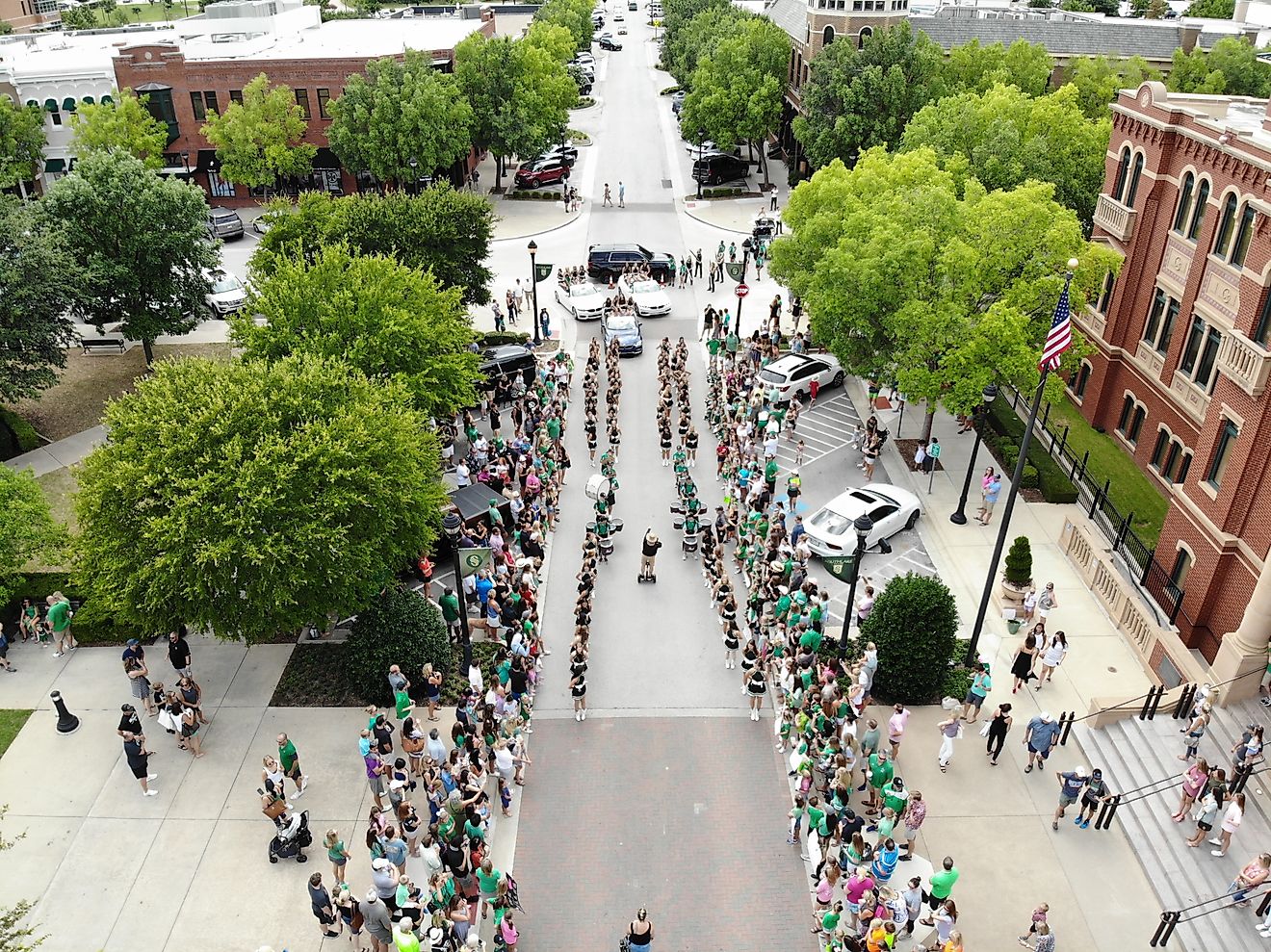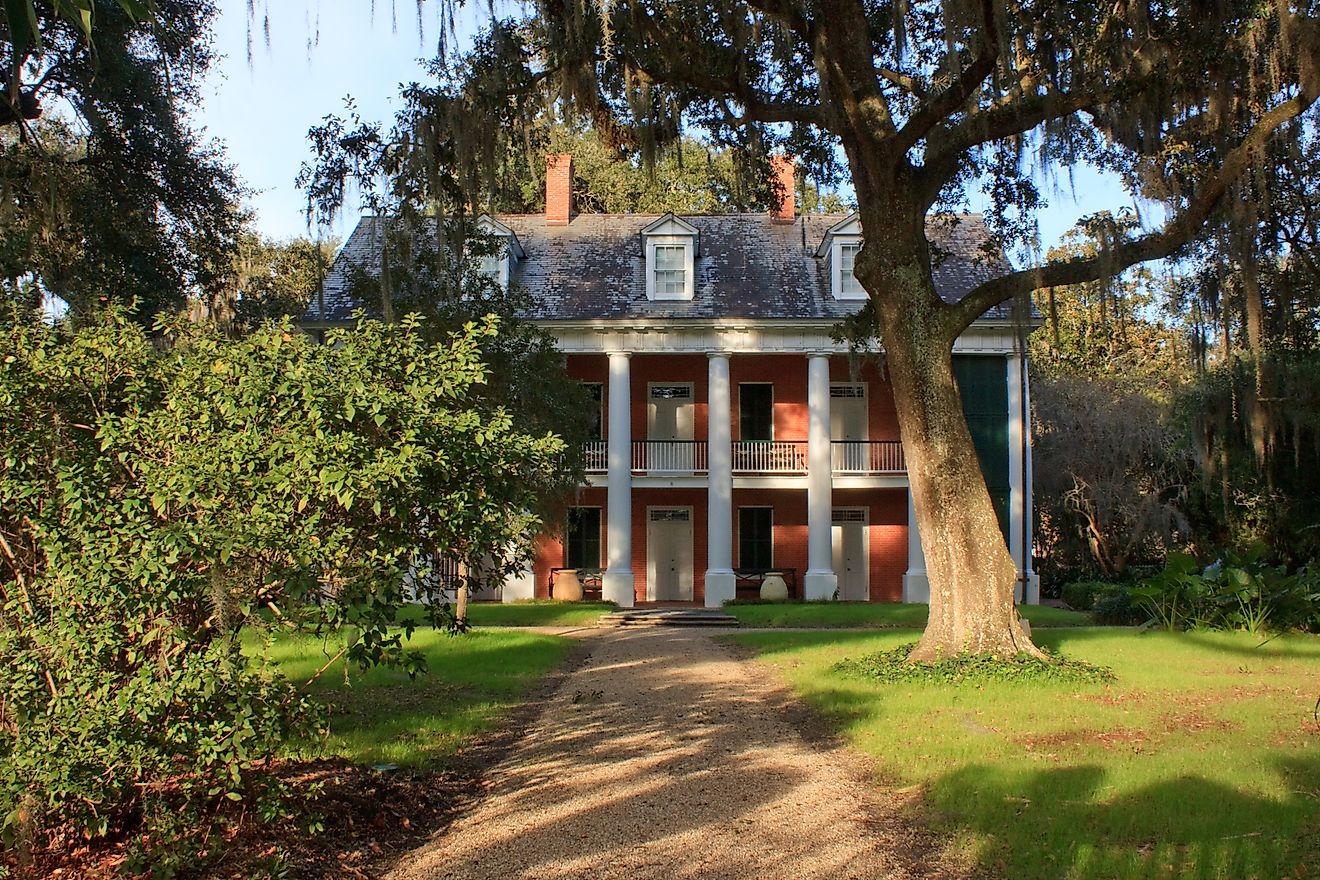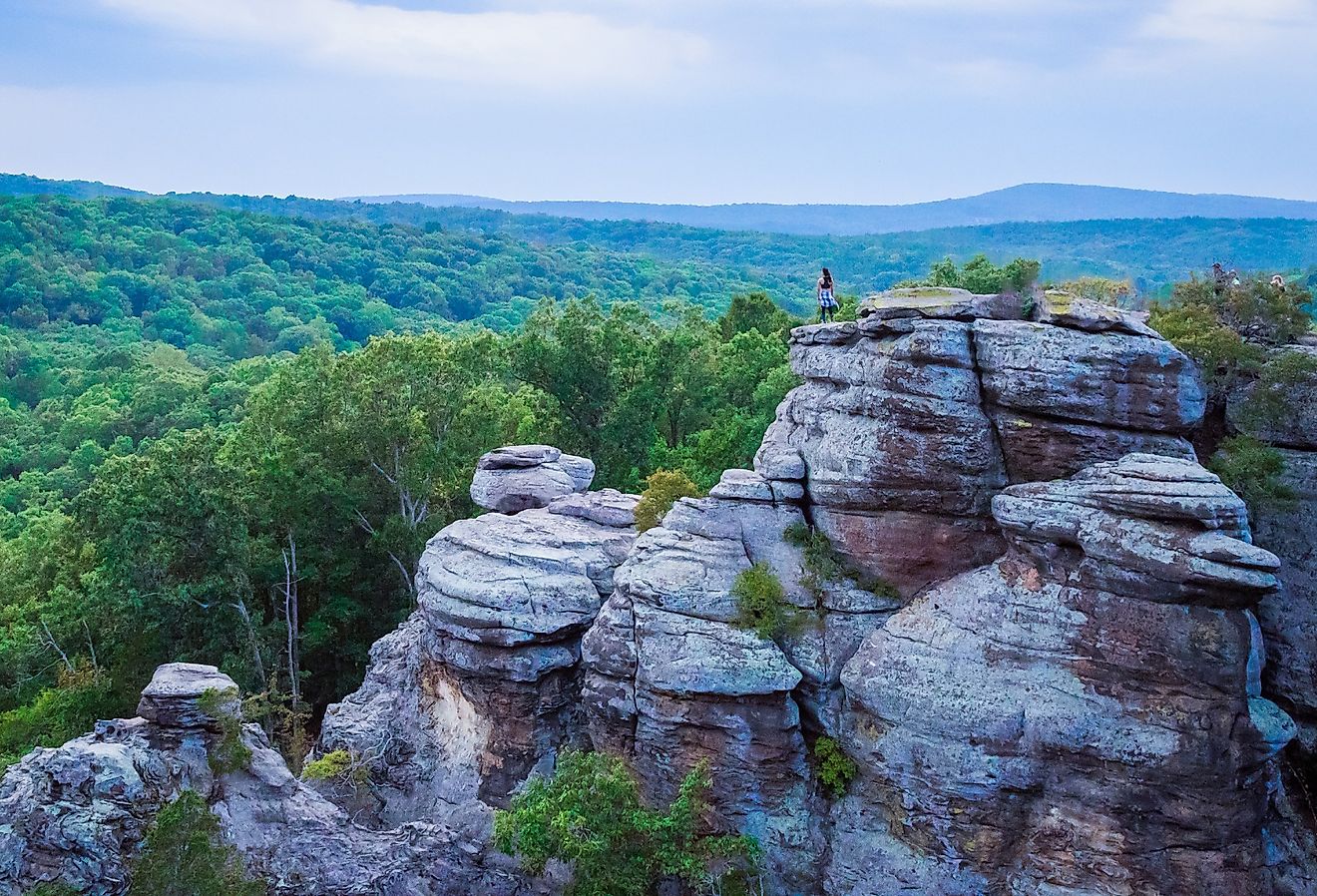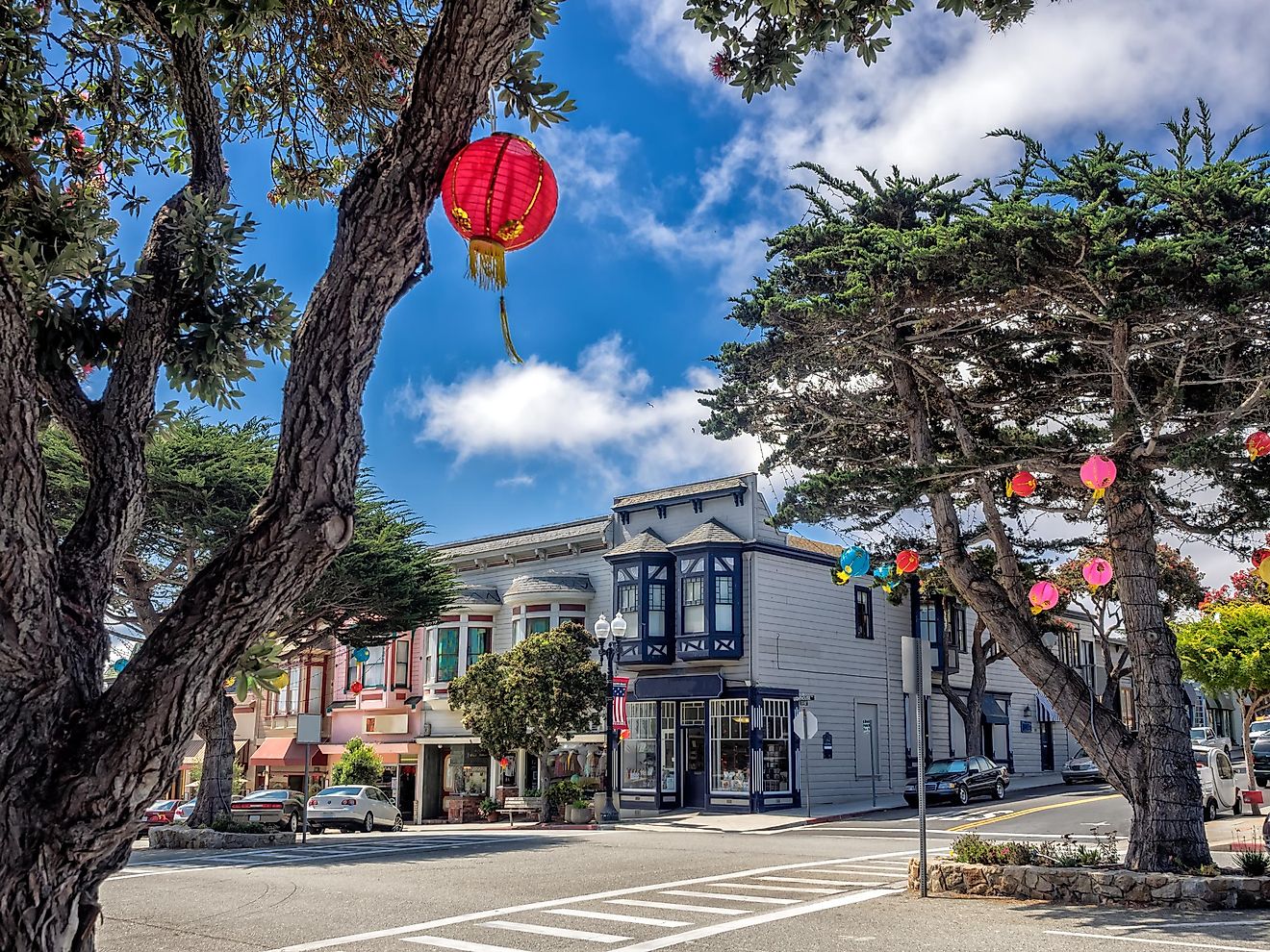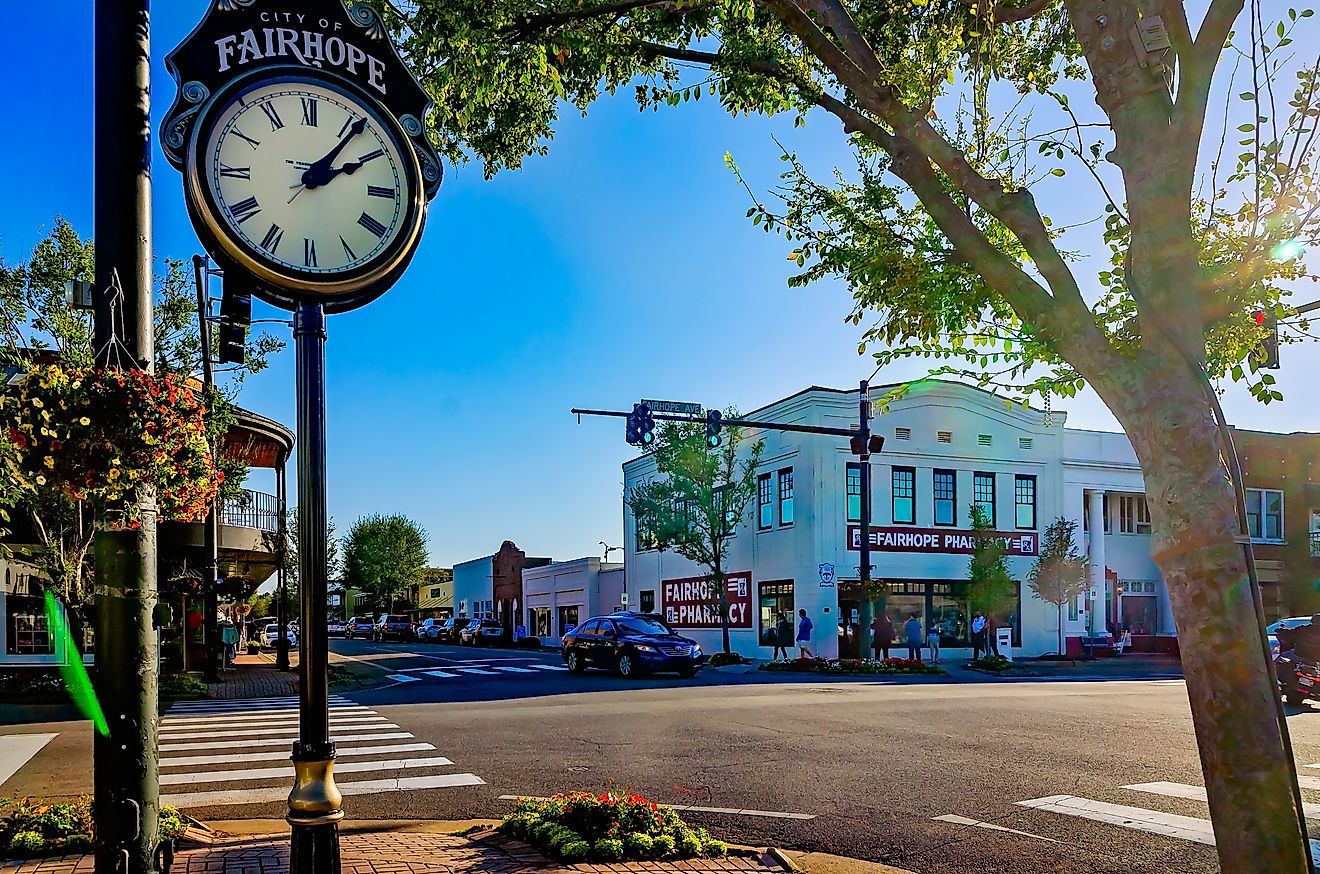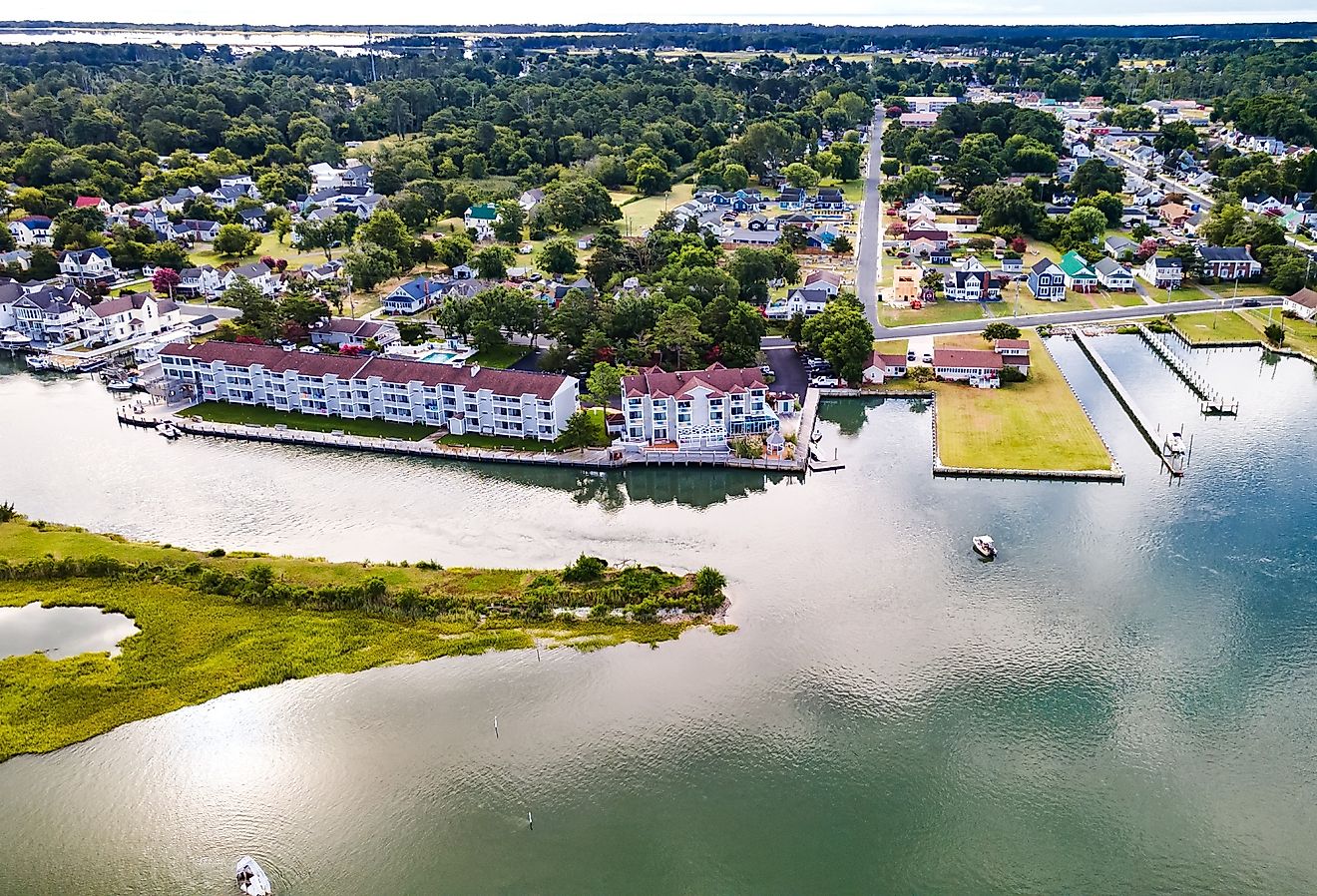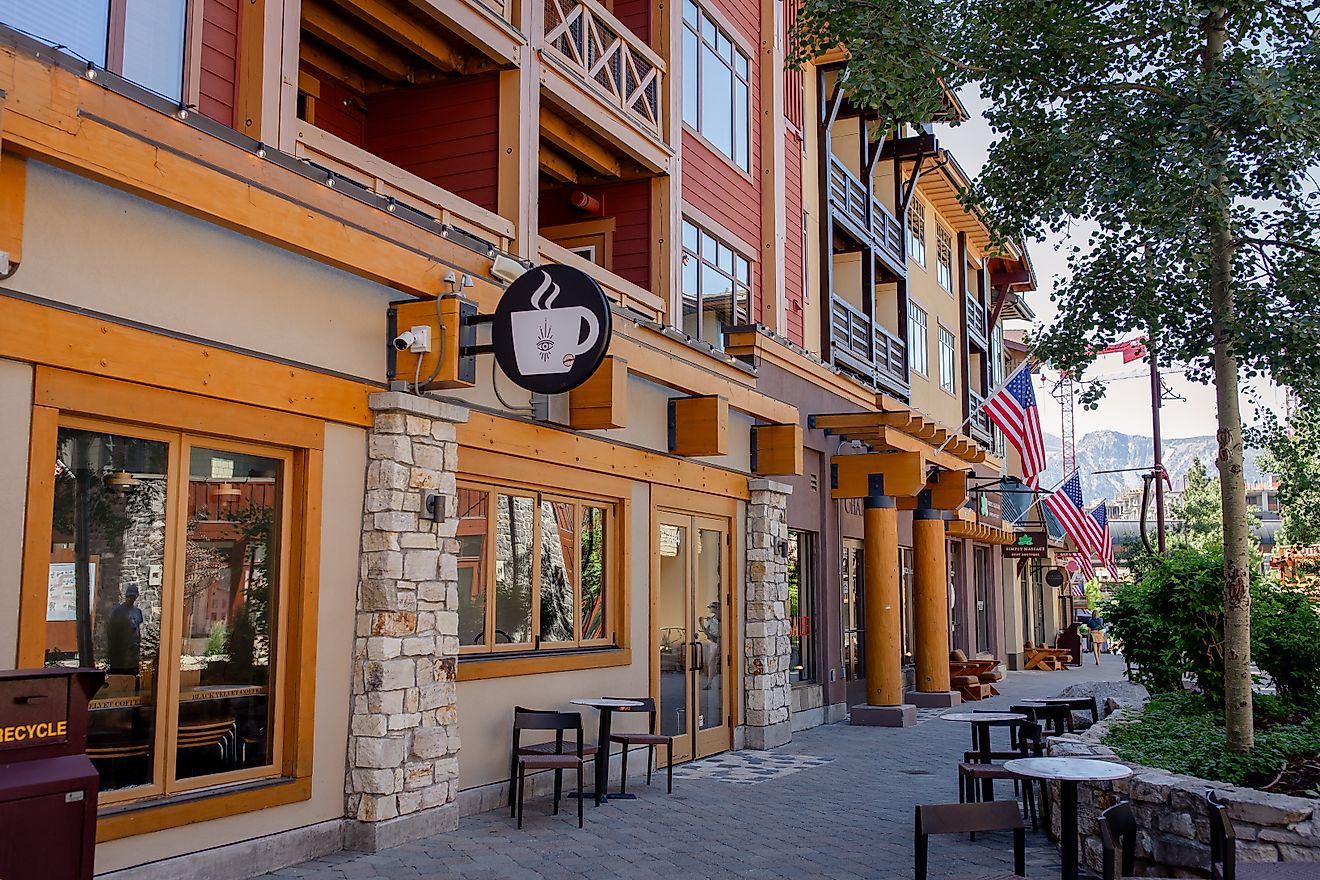
10 Bucket-List Small Towns In Florida
Florida's charm extends far beyond its famous theme parks and bustling beaches. Tucked along winding coastlines, nestled beside crystal-clear springs, and preserved in time along historic brick streets, the state's small towns offer authentic experiences that capture the real essence of the Sunshine State. From centuries-old Spanish colonial architecture to pristine natural springs, from world-class art museums to quiet barrier islands accessible only by boat, these enchanting communities reward curious travelers with unforgettable discoveries. Whether you're seeking artistic inspiration, outdoor adventure, historic intrigue, or simply a slower pace where palm trees sway and locals greet you by name, Florida's bucket-list small towns deliver experiences that linger in memory long after the visit ends.
St. Augustine

The nation's oldest continuously occupied European settlement, St. Augustine (population approximately 16,369), transports visitors to 16th-century Spain through cobblestone streets, horse-drawn carriages, and centuries-old fortifications. Founded in 1565, this coastal gem on Florida's northeast shore preserves over 450 years of history while offering modern amenities, excellent restaurants, and stunning Atlantic Ocean beaches. The compact historic district invites exploration on foot, where every corner reveals architectural treasures and stories of conquistadors, pirates, and early American settlers.

Castillo de San Marcos National Monument, a massive stone fortress completed in 1695, dominates the waterfront with walls built from coquina shell rock that famously absorbed cannonballs rather than shattering. The Lightner Museum, housed in the former Alcazar Hotel built by Henry Flagler in 1888, displays an eclectic collection of Gilded Age treasures, including Tiffany glass, Victorian art, and mechanical musical instruments in lavishly decorated rooms. St. George Street, a pedestrian-only thoroughfare through the heart of the historic district, features colonial-era buildings housing shops, galleries, and restaurants, with Columbia Restaurant serving Spanish and Cuban cuisine in a historic setting since 1983. Anastasia State Park offers four miles of pristine beach, ancient sand dunes, tidal marshes, and maritime hammock ecosystems perfect for hiking, bird watching, and discovering why this coastline captivated explorers centuries ago.
Mount Dora
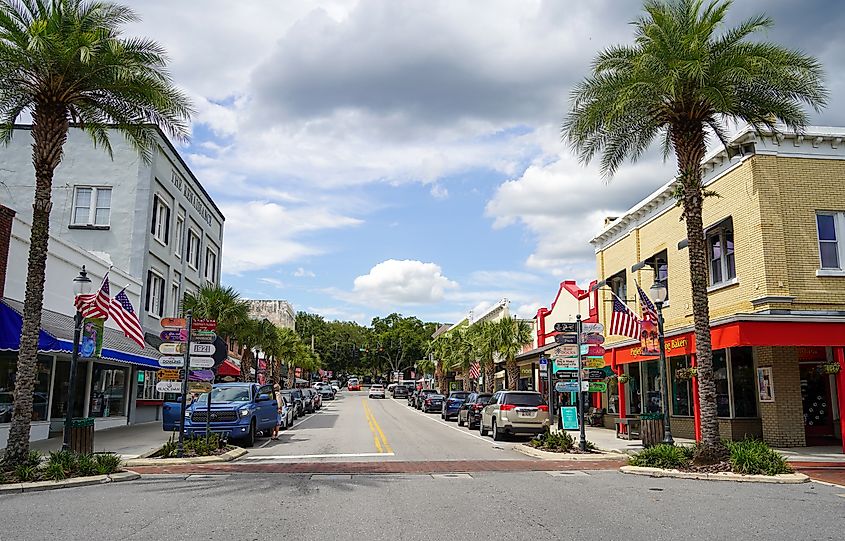
Perched on rolling hills overlooking Lake Dora in Central Florida, Mount Dora (population around 18,725) feels pleasantly transported from New England with its canopy of mature oaks, charming antique shops, and classic architecture. Sitting at 184 feet above sea level—an unusual elevation for the state—this beloved town has earned its reputation as one of America's best small towns through a steadfast commitment to preserving its historic character while nurturing a vibrant arts community. The compact, walkable downtown is perfect for a leisurely stroll, inviting visitors to explore its Victorian-era buildings, independent boutiques, and inviting sidewalk cafés.
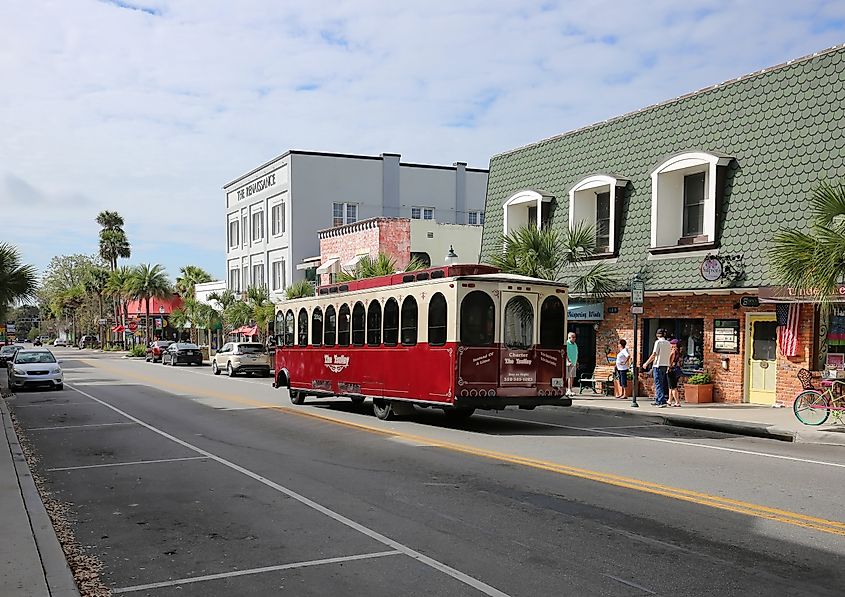
The Mount Dora Center for the Arts anchors the town's cultural scene with galleries showcasing regional artists, classes, and the acclaimed Mount Dora Arts Festival each February, drawing hundreds of artists and thousands of visitors. Donnelly Street, the main downtown thoroughfare, features dozens of antique shops, galleries, and specialty stores, with The Goblin Market Restaurant& Lounge occupying a historic house and serving upscale American cuisine in intimate dining rooms. Lakeside Inn, Florida's oldest continuously operating hotel dating to 1883, offers historic accommodations, waterfront dining at The Verendah, and a beautiful setting overlooking Lake Dora. A highlight for any visitor is the Modernism Museum Mount Dora, featuring a world-class collection of innovative 20th-century art and design.
Apalachicola
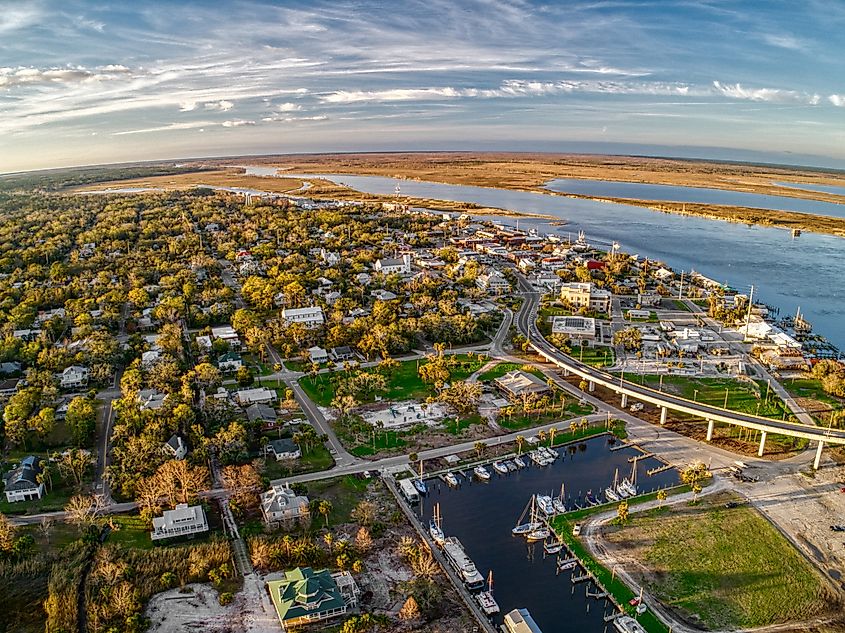
On Florida's forgotten coast, where the Apalachicola River meets the Gulf of Mexico, this historic port town (population approximately 2,300) has supplied 90% of Florida's oysters and maintains an authentic Old Florida atmosphere increasingly rare in the state. Victorian mansions, maritime heritage, and a working waterfront create an authentic coastal experience, while the town's role in early air conditioning history and sponge diving adds fascinating layers to its story.
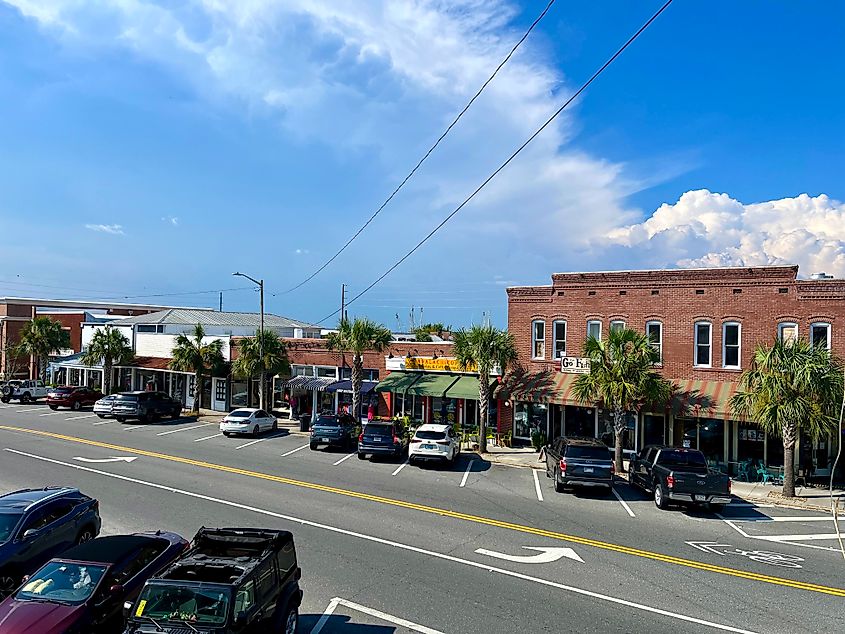
John Gorrie Museum State Park honors the local physician who invented mechanical refrigeration in 1851 while seeking to cool yellow fever patients—technology that made air conditioning possible and transformed Florida's development. Climb the Cape St. George Lighthouse, a meticulously reconstructed landmark on nearby St. George Island that offers panoramic views of the Gulf and the bay. Up the Creek Raw Bar serves fresh Apalachicola oysters and Gulf seafood in a casual waterfront setting where you can watch commercial fishing boats unload their catches. After delving into the town's history, find a peaceful moment at the scenic Battery Park, a waterfront green space with a historic cannon and pavilion that offers serene views of the Apalachicola River and a perfect spot for a picnic.
Cedar Key

Accessible only via a winding highway through wildlife refuges and salt marshes, Cedar Key (population around 748) occupies a cluster of islands in the Gulf of Mexico off Florida's Nature Coast. This remote fishing village feels worlds away from modern Florida, with a laid-back pace, fresh seafood served at waterfront restaurants, and spectacular sunsets that draw photographers and romantics. The absence of chain businesses and the commitment to preserving the town's character create an authentically Old Florida experience.
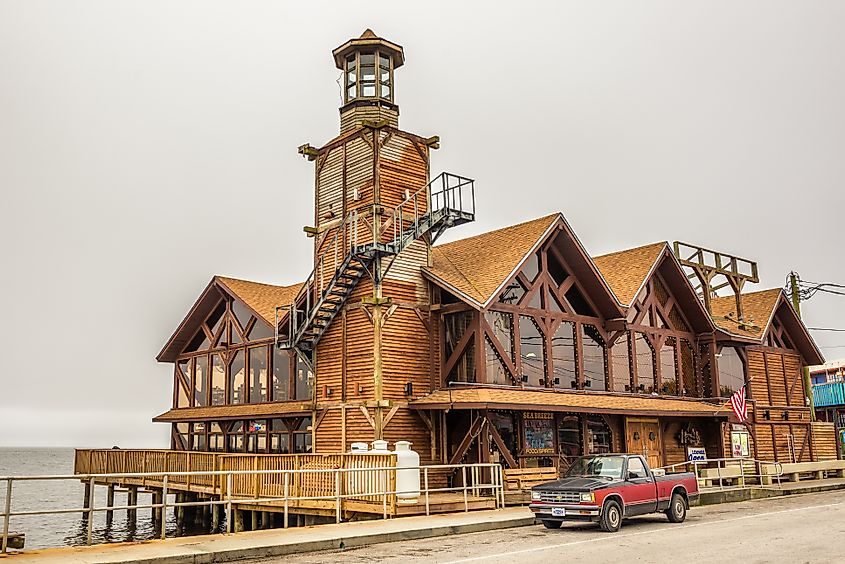
Cedar Key Museum State Park preserves the historic home of St. Clair Whitman and showcases the town's history as a 19th-century industrial center producing pencils, brooms, and lumber before a devastating hurricane and resource depletion transformed it into a quiet fishing village. Cedar Key National Wildlife Refuge protects 13 islands providing critical nesting habitat for birds, with boat tours offering chances to view dolphins, manatees, and countless shore birds. For a truly authentic taste of the coast, make your way to Steamers Clam Bar & Grill, a must-visit Cedar Key restaurant where the laid-back island vibe pairs perfectly with incredibly fresh, locally sourced clams, oysters, and other expertly prepared seafood dishes. The annual Cedar Key Arts Festival, held each spring and fall, transforms the small downtown into an outdoor gallery featuring a hundred of artists and draws thousands of visitors who combine art browsing with sampling local seafood at waterfront eateries.
Fernandina Beach
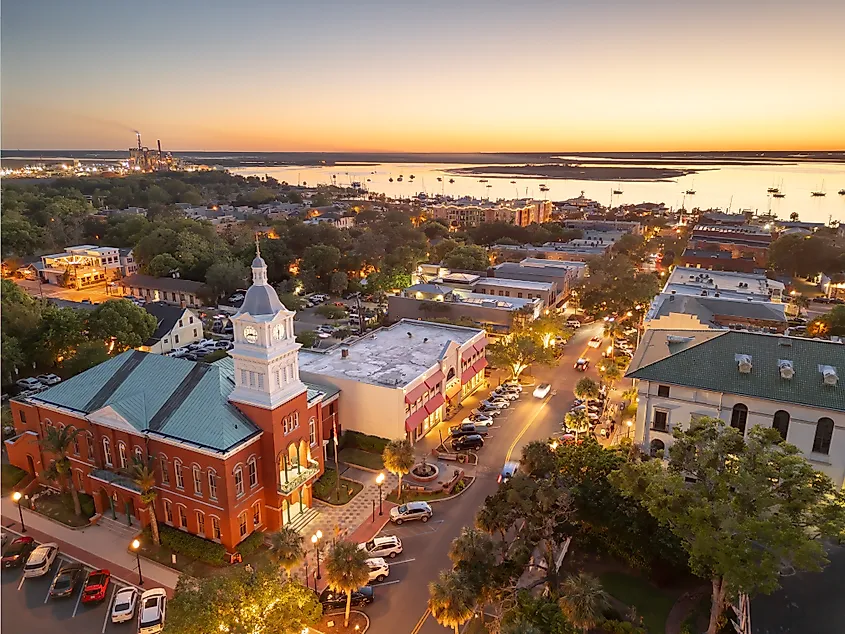
On Amelia Island in Florida's northeastern corner, Fernandina Beach (population around 13,817) preserves a 50-block historic district featuring Victorian architecture, moss-draped oaks, and a walkable downtown filled with independent shops and restaurants. This deep-water port town has flown eight different flags throughout its colorful history, and its historic Centre Street leads directly to a beautiful Atlantic beach. The combination of history, natural beauty, and sophisticated amenities creates an irresistible coastal destination.
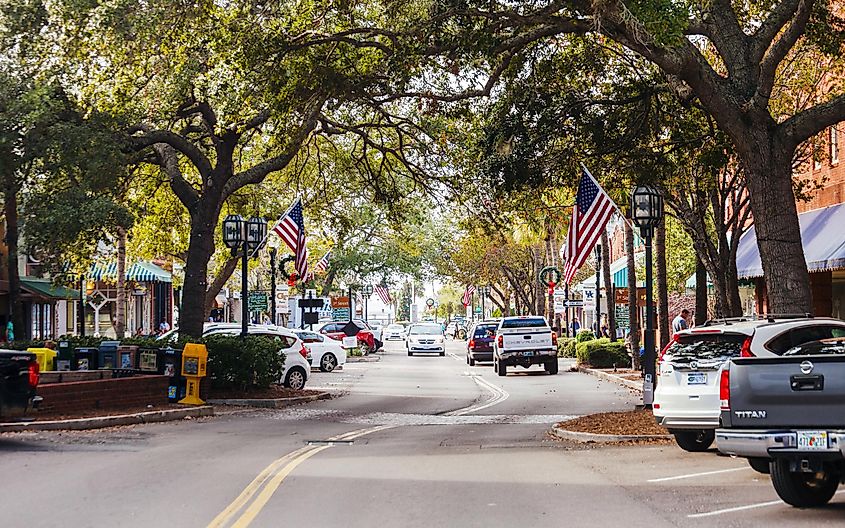
Fort Clinch State Park preserves a well-maintained Civil War-era fort where costumed reenactors demonstrate 1864 garrison life, while the park also offers pristine beaches, fishing, hiking trails, and camping beneath coastal hammocks. The Amelia Island Museum of History provides guided tours through the eight flags of sovereignty and showcases artifacts spanning 4,000 years, from the Timucuan Indians through the golden age of shrimping. Centre Street, the historic main thoroughfare, features dozens of shops, galleries, and restaurants, with The Palace Saloon claiming to be Florida's oldest continuously operating bar, serving drinks since 1903 in an ornate Victorian setting complete with a 40-foot mahogany bar. Make a point to visit the vibrant Fernandina Beach Market Place, a beloved Saturday morning tradition on North Seventh Street, where you can browse stalls of fresh local produce, homemade treats, and unique crafts, all accompanied by live music beneath the shade of ancient oak trees.
DeFuniak Springs
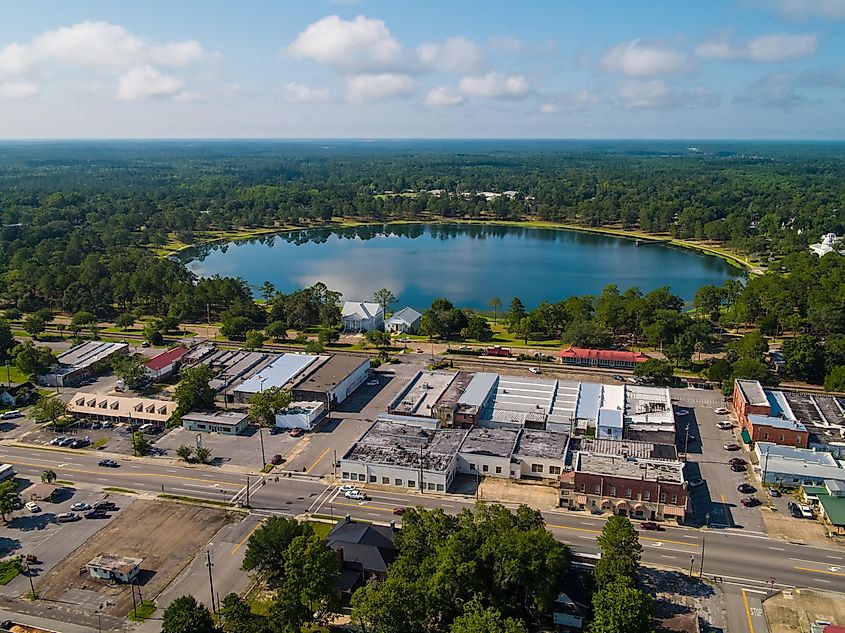
Centered around a perfectly circular spring-fed lake in the Florida Panhandle, DeFuniak Springs (population approximately 7,315) preserves a remarkable collection of Victorian architecture from its late 1800s heyday as a Chautauqua education and culture center. The town radiates from Lake DeFuniak, one of only two naturally circular lakes in the world, with grand historic homes creating one of Florida's most beautiful historic districts. This hidden gem offers a step back in time to gracious Victorian Florida.
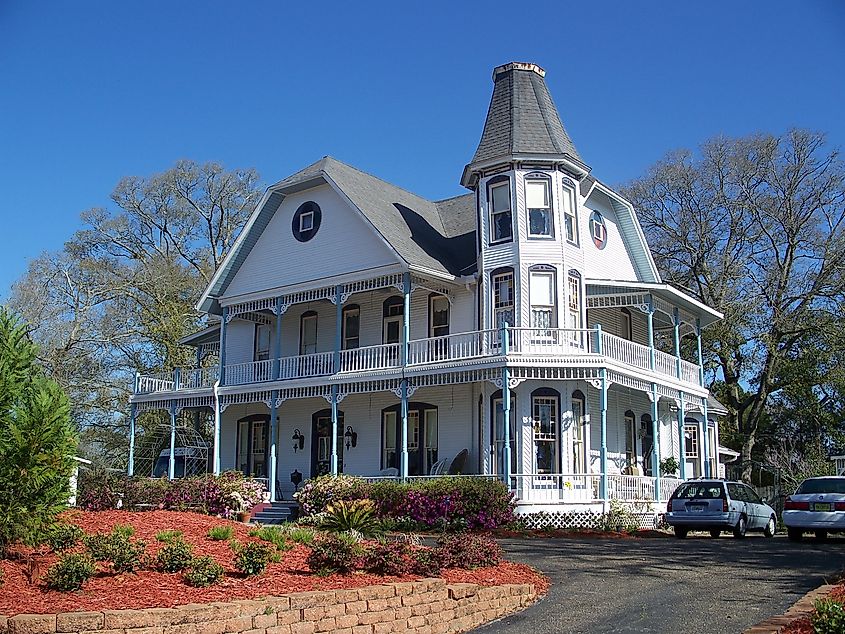
Walton County Heritage Museum occupies a restored Louisville & Nashville Railroad Depot and displays artifacts chronicling local history, the Chautauqua movement, and railroad heritage through photographs and exhibits. The Circle Drive Historic District surrounding the lake features dozens of Victorian homes, many available for tours during special events, showcasing architectural styles from Queen Anne to Neoclassical Revival. Just a short stroll away, Chautauqua Winery offers a delightful tasting experience, specializing in wines made from Carlos and Noble Muscadine grapes grown just 12 miles north, alongside a selection of classic varietals like Chardonnay and Merlot. After exploring the town's historic offerings, find a moment of tranquility in the scenic Chipley Park, a beautifully maintained green space in the heart of the historic district that's perfect for a leisurely stroll or a peaceful rest under the shade of mature live oaks.
Anna Maria Island

This seven-mile barrier island in the Gulf of Mexico (combined population of three cities: Anna Maria, Holmes Beach, and Bradenton Beach totaling approximately 5,800) maintains a laid-back, Old Florida beach town atmosphere with strict building codes limiting height to three stories. Pine Avenue and Bridge Street feature locally owned shops, restaurants, and galleries, while sugar-white beaches and turquoise waters attract visitors seeking a quieter alternative to Florida's more developed beach destinations. Golf carts serve as the preferred mode of transportation, adding to the island's relaxed charm.
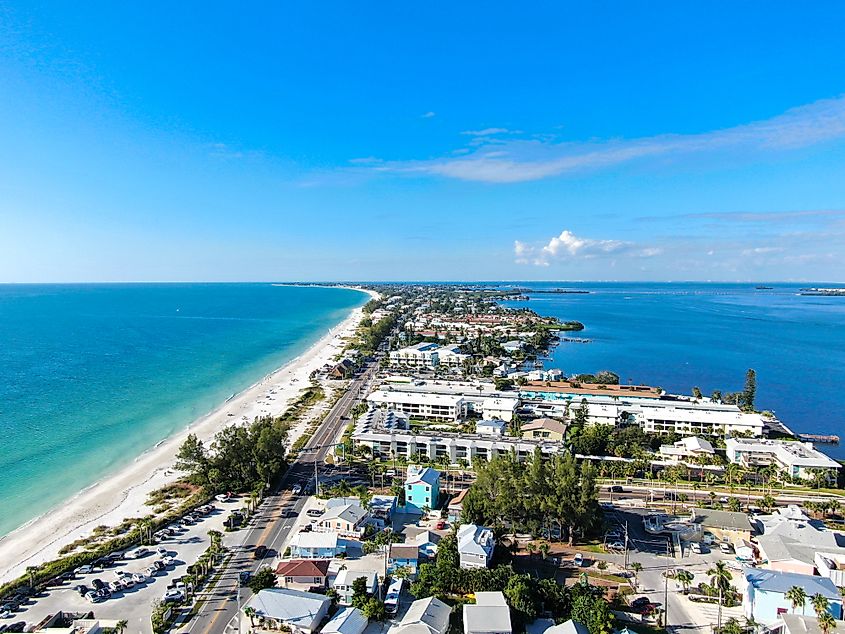
Anna Maria Island Historical Society Museum occupies the Old City Jail building and showcases island history from pioneer settlers through development as a beach resort, with photographs and artifacts chronicling fishing villages and tourism evolution. Bean Point at the northern tip of Anna Maria Island offers some of Florida's most pristine beach experiences with no development, just natural shoreline where Tampa Bay meets the Gulf of Mexico, creating ideal conditions for shell collecting and sunset watching. The Sandbar Seafood + Spirits sits directly on the beach, serving fresh seafood and tropical drinks with tables in the sand and stunning Gulf views. Coquina Beach at the southern end provides beach access, a café, picnic pavilions, and excellent opportunities to observe dolphins playing in the surf while enjoying one of the island's wider beach areas with ample parking and facilities. For a classic Florida Gulf Coast experience, take a leisurely stroll down the Bradenton Beach City Pier, where you can watch anglers reel in their catch, spot dolphins playing in the turquoise water, and enjoy a casual meal with panoramic views at the pier's restaurant.
Tarpon Springs
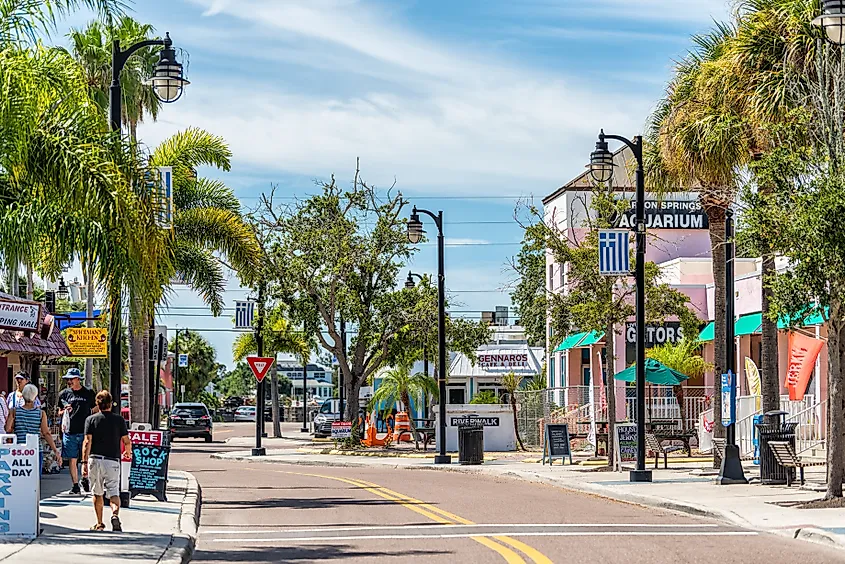
Known as the "Sponge Capital of the World," Tarpon Springs (population approximately 26,241) preserves the largest Greek community in America, where the aroma of fresh baklava mingles with salt air along the historic sponge docks. Greek immigrants arrived in the early 1900s to dive for natural sponges, and their descendants maintain vibrant traditions through authentic restaurants, bakeries, and cultural celebrations. The waterfront district features colorful boats, working sponge warehouses, and Mediterranean-style architecture that creates an atmosphere more reminiscent of the Aegean than the Gulf of Mexico.
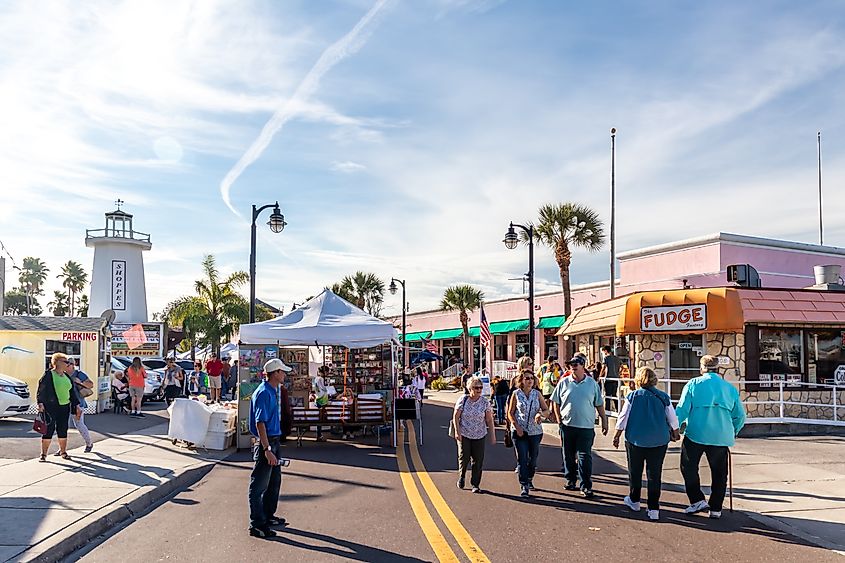
The Tarpon Springs Sponge Docks form the heart of the historic district, where visitors can watch sponge demonstrations, browse shops selling natural sponges and Greek imports, and observe working boats that still harvest sponges using traditional methods. St. Nicholas Greek Orthodox Cathedral, built in 1943 as a replica of the Hagia Sophia in Constantinople, features stunning Byzantine architecture, elaborate iconography, and hosts the annual Epiphany celebration, where young men dive for a cross thrown into Spring Bayou. Hellas Restaurant & Bakery has served authentic Greek cuisine since 1970, offering saganaki, moussaka, and fresh seafood in a bustling atmosphere where Greek is commonly spoken. Fred Howard Park extends into the Gulf via a mile-long causeway to a beach island, providing swimming, picnicking, and sunset views, while Spring Bayou in downtown offers walking paths around spring-fed waters surrounded by historic homes.
Safety Harbor
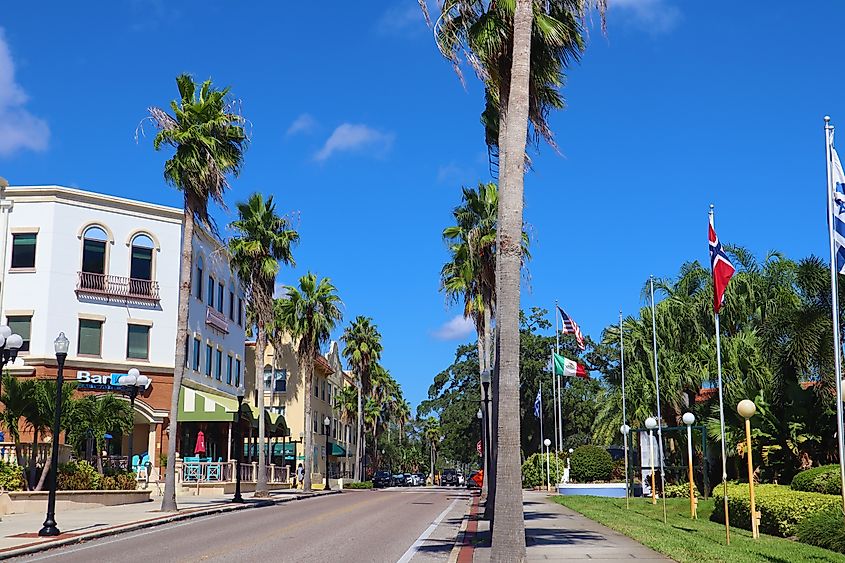
On the shores of Old Tampa Bay northeast of St. Petersburg, Safety Harbor (population approximately 16,950) combines a charming downtown with natural mineral springs that attracted Native Americans for thousands of years. The historic downtown district features brick streets, independent shops, galleries, and restaurants, while the waterfront offers parks, trails, and stunning bay views. This hidden gem provides a small-town atmosphere within the Tampa Bay metropolitan area.
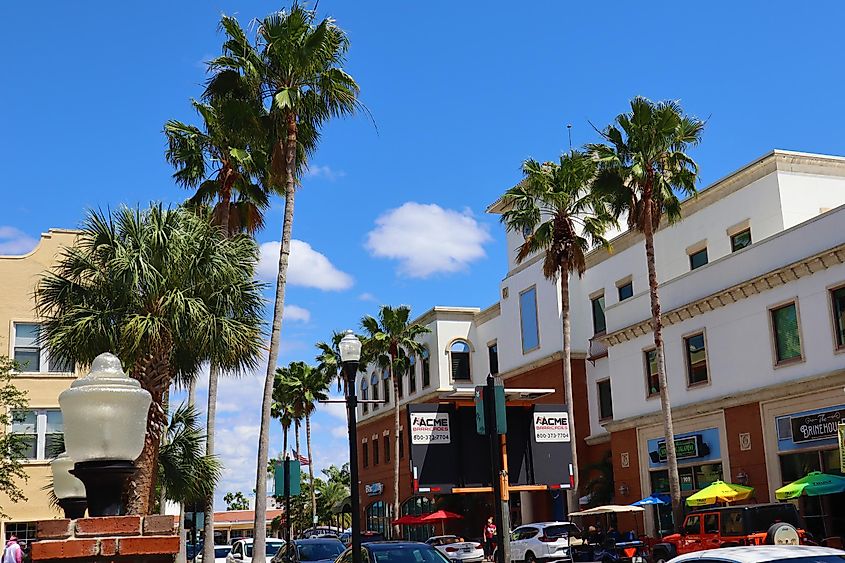
Safety Harbor Museum and Cultural Center occupies the historic Espiritu Santo Springs site, where natural mineral springs flow and exhibits chronicle 12,000 years of human habitation from the Tocobaga Indians through Spanish explorers to modern development. Philippe Park, named for Count Odet Philippe, who established Florida's first commercial citrus grove here in 1842, features ancient Native American temple mounds, waterfront trails, picnic areas, and bay access. Downtown's Main Street hosts locally owned businesses, including Barfly Saltwater Grill, which serves fresh seafood and Southern-inspired dishes in a casual atmosphere. Immerse yourself in the vibrant local art scene at Syde Entel Galleries, a cornerstone of Safety Harbor's charming downtown for over forty-five years, which presents an extraordinary collection of fine art and hand-blown glass within its dynamic 5,500-square-foot exhibition space.
Stuart
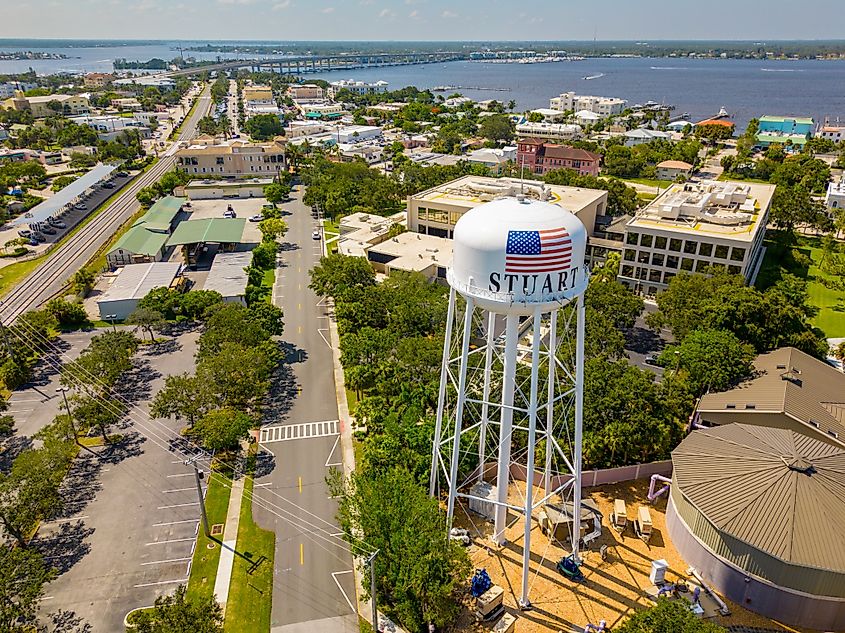
Calling itself the "Sailfish Capital of the World," Stuart (population approximately 19,000) sits along the St. Lucie River on Florida's Treasure Coast, where historic downtown streets meet pristine waterways. This charming riverfront town blends Old Florida architecture with a thriving arts scene, locally owned restaurants, and easy access to both Atlantic beaches and the natural wonders of the Indian River Lagoon. Downtown's brick-lined Flagler Avenue and Osceola Street create a walkable historic district that feels authentically Floridian without the commercial development that dominates much of the coast.
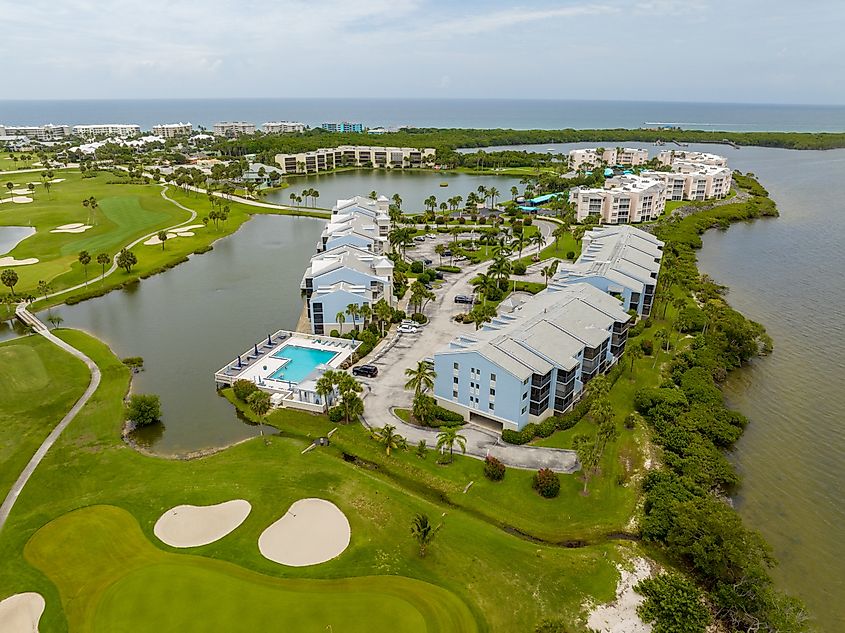
For a family-friendly educational adventure, visit the Children's Museum of the Treasure Coast, where interactive, hands-on exhibits and programs are designed to spark curiosity and foster self-confidence in a state-of-the-art environment, all while celebrating the unique character and ecology of Florida. Stuart Heritage Museum occupies a 1901 general store building downtown and showcases local history through photographs, artifacts, and exhibits about fishing, farming, and the Florida East Coast Railway's impact on development. The Gafford serves farm-to-table cuisine in a beautifully restored 1920s building with exposed brick walls, while Riverwalk Cafe & Oyster Bar offers waterfront dining with views of boats passing along the St. Lucie River. For an engaging coastal experience, visit the Florida Oceanographic Coastal Center, a 57-acre marine life sanctuary where families can interact with stingrays, discover local sea turtles and sharks in the Ocean EcoCenter, and participate in educational programs that inspire environmental stewardship of Florida's unique ecosystems.
Discover Florida's Hidden Treasures
These ten exceptional small towns reveal a Florida far removed from theme park crowds and high-rise beaches. From Greek sponge divers preserving centuries-old traditions in Tarpon Springs to Victorian architecture surrounding a perfectly circular lake in DeFuniak Springs, each destination offers authentic experiences that showcase the state's diverse heritage and natural beauty. Whether you're exploring Civil War fortifications, kayaking spring-fed rivers, browsing antique-filled historic districts, or savoring fresh oysters at waterfront restaurants, these charming communities provide meaningful connections to Florida's past and present. Skip the usual tourist hotspots and discover the small-town soul of the Sunshine State, where genuine hospitality, fascinating history, and unspoiled landscapes create unforgettable memories worth adding to any bucket list.
